NWS Weather Radio (original) (raw)
NOAA Weather Radio
Basic Information
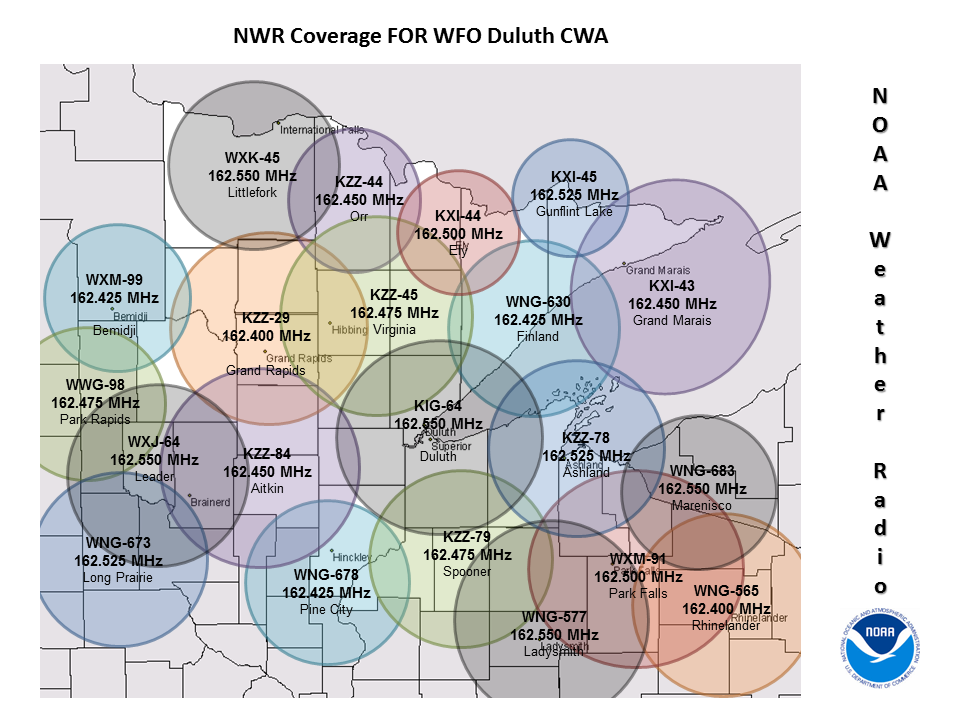 Click on image for a larger view What is NOAA Weather Radio? NOAA Weather Radio (NWR) is a radio system designed to broadcast continuous weather information, forecasts and warnings with no commercial interruptions. Weather messages repeat about every 6 minutes, but may be slightly longer during highly active weather events. During severe weather, messages may repeat as often as every 3 minutes. Most radio stations are maintained continuously. The primary objective for NOAA Weather Radio is to broadcast warnings immediately to the public. All other information is considered secondary and may be suspended from the broadcasts during times of severe weather or warning events. Some radios are equipped with special message encoders that activate an audible alarm. This alarm feature signifies that some warning or special emergency information has been broadcast. The listener can then listen to the emergency message. Most NOAA weather radios can be purchased at discount, electronics, and mariner supply stores. The average cost is around $40, but more elaborate radios may cost more. What is NOAA Weather Radio SAME? The Emergency Broadcast System (EBS) was replaced by the Emergency Alert System (EAS) on January 1, 1997. The EAS provides a digital burst of information that includes exact locations and the type of emergency. EAS information is carried over the NOAA Weather Radio (NWR) network. The special encoding of location and type is decoded by special receivers called SPECIFIC AREA MESSAGE ENCODER, or SAME. NOAA Weather Radios can be purchased that have SAME, and will alarm only if the emergency is in your county and is of the type that you have programmed to be received. If you are in the Northland and want to have the EAS alert on your NOAA weather radio, click here for the Northland SAME codes. When is the SAME system activated? The NWR SAME system WILL BE ACTIVATED for WARNINGS of the following type: TOR - Tornado Warning SVR - Severe Thunderstorm Warning FFW - Flash Flood Warning FFW - Small Stream and Urban Flood Warning FLW - Flood Warning SMW - Special Marine Warning Depending on the severity of the event, the NWR SAME system MAY BE ACTIVATED for the following: NPW - Non-Precipitation Weather: High Wind Warning, Frost/Freeze Warnings, Wind Chill Warnings WCN - Severe Thunderstorm and Tornado Watches FFA - Flood and Flash Flood Watches FLS - Flood and Flash Flood Statements WSW - Winter Storm Warning Click on image for a larger view What is NOAA Weather Radio? NOAA Weather Radio (NWR) is a radio system designed to broadcast continuous weather information, forecasts and warnings with no commercial interruptions. Weather messages repeat about every 6 minutes, but may be slightly longer during highly active weather events. During severe weather, messages may repeat as often as every 3 minutes. Most radio stations are maintained continuously. The primary objective for NOAA Weather Radio is to broadcast warnings immediately to the public. All other information is considered secondary and may be suspended from the broadcasts during times of severe weather or warning events. Some radios are equipped with special message encoders that activate an audible alarm. This alarm feature signifies that some warning or special emergency information has been broadcast. The listener can then listen to the emergency message. Most NOAA weather radios can be purchased at discount, electronics, and mariner supply stores. The average cost is around $40, but more elaborate radios may cost more. What is NOAA Weather Radio SAME? The Emergency Broadcast System (EBS) was replaced by the Emergency Alert System (EAS) on January 1, 1997. The EAS provides a digital burst of information that includes exact locations and the type of emergency. EAS information is carried over the NOAA Weather Radio (NWR) network. The special encoding of location and type is decoded by special receivers called SPECIFIC AREA MESSAGE ENCODER, or SAME. NOAA Weather Radios can be purchased that have SAME, and will alarm only if the emergency is in your county and is of the type that you have programmed to be received. If you are in the Northland and want to have the EAS alert on your NOAA weather radio, click here for the Northland SAME codes. When is the SAME system activated? The NWR SAME system WILL BE ACTIVATED for WARNINGS of the following type: TOR - Tornado Warning SVR - Severe Thunderstorm Warning FFW - Flash Flood Warning FFW - Small Stream and Urban Flood Warning FLW - Flood Warning SMW - Special Marine Warning Depending on the severity of the event, the NWR SAME system MAY BE ACTIVATED for the following: NPW - Non-Precipitation Weather: High Wind Warning, Frost/Freeze Warnings, Wind Chill Warnings WCN - Severe Thunderstorm and Tornado Watches FFA - Flood and Flash Flood Watches FLS - Flood and Flash Flood Statements WSW - Winter Storm Warning |
Programming Your NOAA Weather Radio
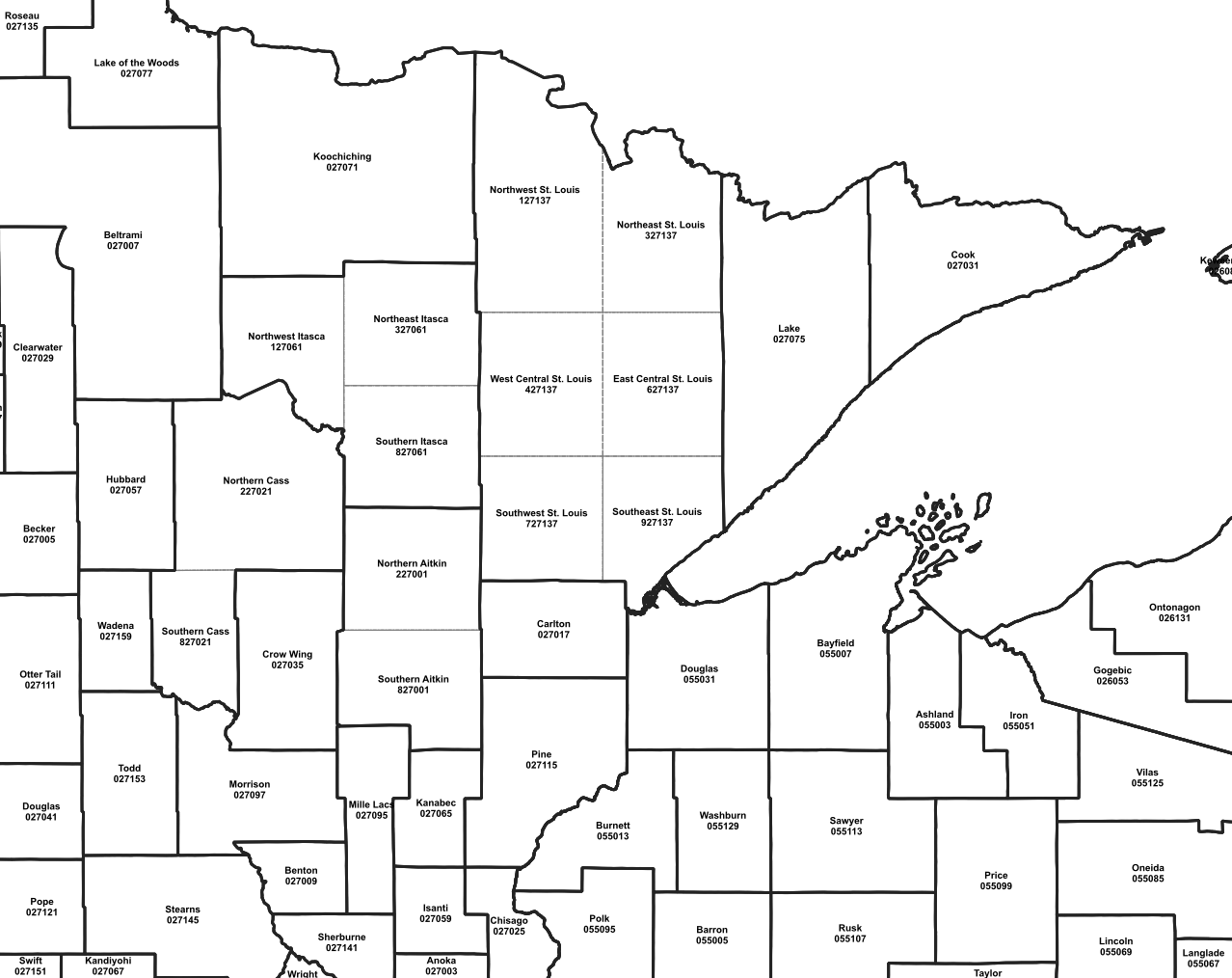
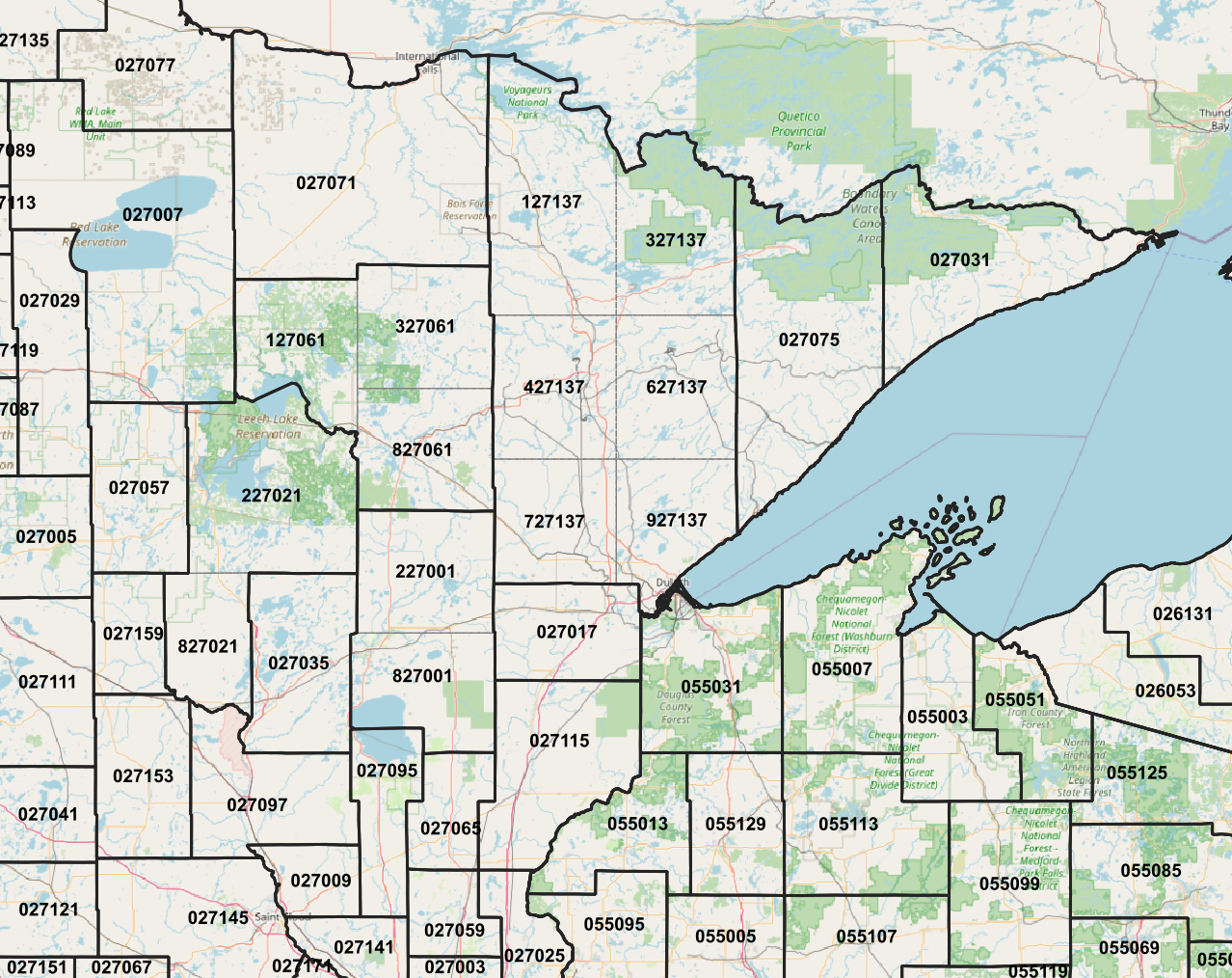
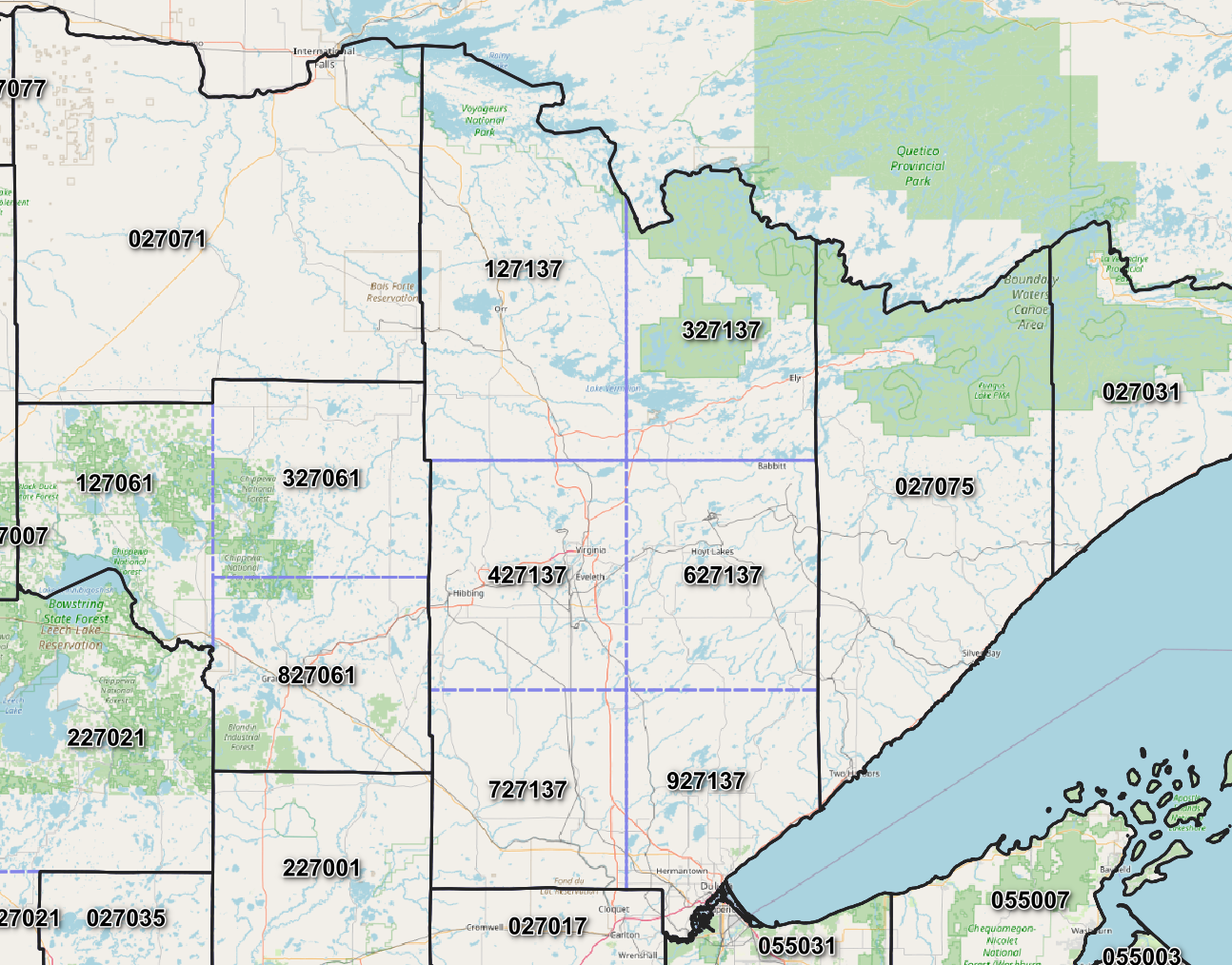
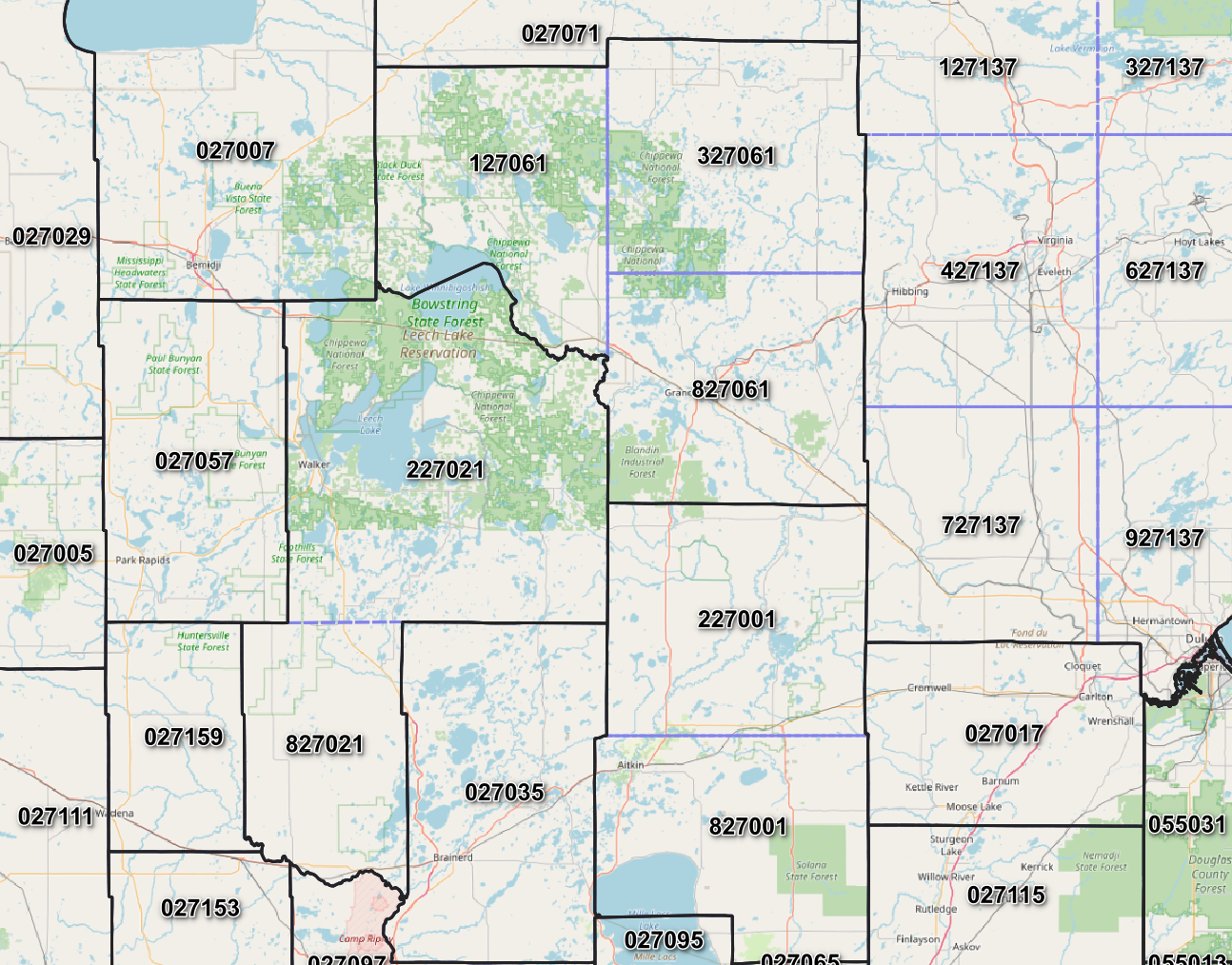
How to find the SAME (FIPS) Code for your location:
Find you location on the list below, using the maps above as a reference if you live in a county which is sub-divided into smaller areas. Use the SAME code listed below or on the map above when programming your radio. If you see multiple transmitters listed, click on the links to see which transmitter is best for your area. (Some radios may tune to the strongest signal automatically, others may require you to choose the frequency or channel number - listen to the broadcast and choose the one that sounds the clearest.)
Marine Notes
When it comes to getting weather alerts, you have a number of options:
- If you are using a Marine Radio or NOAA Weather Radio that does not have SAME capability, just tune to the nearest transmitter. Many marine radios, even without SAME capability, have a "Weather Alert" feature which can scan the weather channel periodically for weather alerts. Note that without SAME you will get ALL weather alerts for the transmitter's coverage area, so the radio will alert for something like a flood warning on the adjacent land areas. To find the nearest transmitter, consult the maps on this page or simply scan and listen to the broadcast that comes in the clearest. Note that there may be more than one radio covering your location.
- If you are using a Marine Radio or NOAA Weather Radio with SAME capability, you may choose to program the associated zone SAME code into the radio, and this way you will only be alerted if a warning is issued that covers that specific geographic area. Use the maps above to program your radio's SAME code.
- For more information on the marine broadcasts on NOAA Weather Radio, visit https://www.weather.gov/marine/wxradio